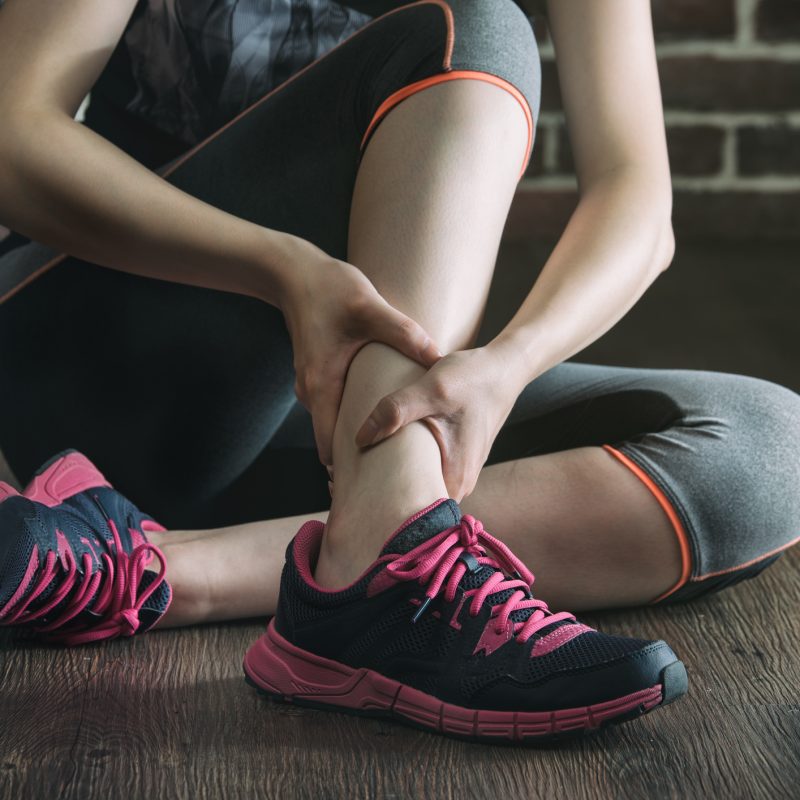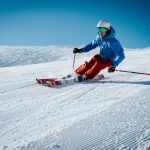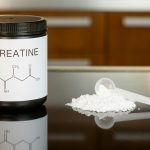
Sports injuries affect athletes on a multitude of levels, including the biological, psychological, and social realms. The traditional format used by physical therapists involves managing and relieving symptoms to facilitate recovery. In this article, we introduce a novel approach to treating sports injuries that purports to address biopsychosocial factors, all of which undoubtedly contribute to an athlete’s recovery and return to play. While the fitness world awaits additional research, we present the fundamental principles behind this new way to view injuries and their rehabilitation.
Addressing Injuries as Models of Reversible Involution
The concept of reversible involution occurs frequently in the human body. By definition, this term refers to a process of regression, usually of a human tissue, that can reverse and return to its former state once an individual resumes the original stimulus. Recently, professionals have begun applying this theory to sports-related injuries, offering a novel framework for rehabilitation/physical therapy to facilitate an athlete’s readaptation process/return to their chosen sport.
The Holistic Reconceptualization of Recovery
Physical therapists have traditionally managed sports-related musculoskeletal injuries by attempting to ameliorate discomfort and swelling, often through the RICE methodology (rest, ice, compression, and elevation). We shall address this in greater detail later in the article. Research has brought to light the idea of physiological regulation based on the allostasis-interoception model, suggesting that we view these injuries as both dynamic and reversible.
This newer and more holistic view allows the athlete to not only recover mechanically, but also physiologically. Seen in this light, physical therapists can begin to treat the immediate consequences of an injury by attending not merely to the physicality (swelling, bruising, pain, inability to bear weight, etc.) but also addressing the physiological, psychological, and technical concerns every serious athlete faces following a significant play-disrupting accident.
By treating a sports injury as a prime example of a reversible involution, recovery can address the physiological changes reflecting the body’s complex interactivity, which, in turn, directs one’s ultimate healing potential. Surpassing historical paradigms of sports medicine, this multidimensional approach can optimize the rehab process and therefore accelerate the athlete’s return to health and full functionality.
Treating the Whole Person and Not Just the Injury
Sports injuries pose a significant and widespread challenge for athletes. They disrupt training schedules, slow down or thwart competitive goals, and lead to profound physical, physiological, and psychological changes. If we choose to study the nature of injuries as a biological outcome within an athlete’s allostatic response, we can take on a perspective that could revolutionize approaches to rehabilitation.
Allostasis refers to a process of continuous adjustment of the organism’s internal environment (blood pressure, temperature, etc.) to anticipate and adapt to environmental changes, and interoception to the sensing of the body’s signals. Taken together, allostatic and interoceptive processes contribute to meeting the upcoming internal and environmental demands through the constant updating of internal cues ~
- increasing blood supply in a fight -or -flight situation
- lowering heart rate when going to sleep
- reducing blood flow to skin capillaries to preserve core temperature
Temporary regression of biological systems naturally occurs during/after a sports injury, a stress-related response that affects individuals physiologically, emotionally, socially, and behaviorally. Within the allostasis-interoceptive paradigm, scientists refer to this phenomenon as cacostasis, or “bad state” (from the ancient Greek word for bad, or kakós) when speaking of this particular state of disharmony. They may refer to the cacostatic load as the cumulative pathophysiological burden of the individual.
Engineering studies of neural design, coupled with physiological evidence, indicate that the brain boasts the capacity to continually anticipate the body’s energy needs and prepare to meet those needs before they arise. As such, this allostasis shifts from a “condition” to a “process” by which the brain efficiently maintains energy regulation in the body. Allostasis aligns with the concept of prediction, and recent scientific belief rests on the theory that successful allostasis actually requires the prediction of interoceptive signals. Thus, in addition to the ascending pathways and brain regions important for interoception, research has now proposed the existence of a distributed intrinsic allostatic/interoceptive system in the brain.
The Role of the Allostatic Load in Rehabilitating an Injury
Allostatic load refers to the cumulative burden of chronic stress and life events. It involves the interaction of different physiological systems at varying degrees of activity. When environmental challenges such as a painful sports injury exceed an individual’s ability to cope, then allostatic overload ensues.
Not surprisingly, allostatic load and overload tend to align with poorer health outcomes. By tuning into and assessing allostatic overload, we can potentially effect great changes in the management of health and lifestyle medicine.
Recent research demonstrates a connection between the psychological factors that plague an athlete following a sidelining injury and their return to sports participation. One systematic research review demonstrated that psychosocial interventions can, in fact, facilitate post-injury recovery in athletes by promoting a positive emotional state and, consequently, better rehabilitation adherence. Further research will determine the most effective psychosocial interventions for specific psychological factors, the optimal duration of such interventions (largely dependent upon the individual), the best method of implementation following a sports injury, and the impact of these interventions on return to play.
Rethinking R.I.C.E.
As mentioned above, the first line of defense when faced with a sports injury tends to involve R.I.C.E., the acronym for Rest, Ice, Compression, and Elevation. While rest figures prominently in the initial stages of an injury, continuing to keep the joint immobilized can actually hinder healing. Newer treatment models emphasize early, controlled movement to stimulate blood flow, maintain range of motion, and promote the regeneration of soft tissue. Excessive ice application, too, may delay the healing process as it inhibits the same inflammatory response upon which the body relies for tissue repair.
Compression and elevation remain important for reducing swelling, but now sports medicine experts favor combining these with other modalities, such as active recovery and targeted exercises.
Modern Treatment Modalities
This new paradigm, shifting to address the whole athlete and viewing the injury as reversible, falls nicely in place with some of the innovative approaches gaining popularity in sports injury treatment:
- Active Recovery: low-impact activities that promote blood flow and healing without stressing the injured area
- Physical Therapy: manual therapy, therapeutic exercises, and modalities like ultrasound and electrical stimulation, designed to restore function and prevent re-injury
- Platelet-Rich Plasma (PRP) Therapy: injecting a concentration of platelets from the patient’s own blood into the injured area; platelets contain growth factors that promote tissue healing and regeneration
- Prolotherapy: injecting a solution into the injured area to stimulate the body’s natural healing response.
- Extracorporeal Shock Wave Therapy (ESWT): sound waves used to stimulate healing in soft tissue injuries like tendonitis and plantar fasciitis
A rehabilitation plan strives to return the injured athlete to their chosen sport as quickly and effectively as possible. Therefore, a rehabilitation plan should seek to minimize the severity of an injury, reduce or reverse loss of function, and prevent, correct, or heal the disability. While this may seem sufficient, the newer model of therapy includes assessing the psychological factors that the athlete faces — pain, frustration, perhaps unwillingness to follow safe guidelines, wanting to forego therapy at all and jump back into the game, fear of losing strength/agility/technique, etc. All of these factors may contribute to feeling isolated from teammates, another concern that needs addressing.
R.I.C.E. versus M.E.A.T.
Our profession’s “old school” way of dealing with sports-related musculoskeletal injuries relied mainly on R.I.C.E., as mentioned above. Recent data indicate that the newer perception of an injury, one that sees the problem as both dynamic and reversible, presents another option to consider during rehabilitation.
The acronym M.E.A.T. stands for
- Movement
- Exercise
- Analgesics (over-the-counter anti-inflammatory meds and pain killers)
- Treatment
As we can see, M.E.A.T. represents a comprehensive approach to managing sports injuries and promoting recovery. This protocol stresses the importance of movement and exercise in the early stages of rehabilitation, along with the use of over-the-counter pain remedies and specific treatments tailored to the individual’s needs. In this fashion, M.E.A.T. aims to promote faster healing and restoration of normal function, while also lessening the risk of re-injury, a prime concern for serious athletes.
Inflammation and Swelling
The critical role of inflammation in the healing process must receive due consideration. Understanding inflammation and promoting waste removal must figure prominently in effective injury management.
While the R.I.C.E. protocol relies heavily on ice to reduce swelling, research suggests that ice only confers short-term benefits by limiting pain, tissue metabolism, and secondary tissue damage, rather than directly reducing swelling long-term. A study conducted in 2004 by Bleakley et al found that cryotherapy influences key inflammatory events at the cellular and physiological level, slowing the accumulation of inflammatory mediators and reducing the risk of further injury. However, very scant evidence exists in support of ice alone leading to a significant or sustained reduction in swelling. By contrast, the M.E.A.T. protocol homes in on controlled movement to achieve optimal long-term reduction of swelling. Controlled movement activates the muscle pump mechanism, helping to drive excess fluid out of the injured area through improved lymphatic drainage. Studies have found that early mobilization not only helps reduce edema but also promotes functional recovery. By enabling tissue regeneration and protection, this protocol may offer a more effective long-term strategy for reducing swelling than ice alone.
Furthermore, movement and gentle exercise will help to maintain/improve the range of motion around an injured joint, as well as prevent undue loss of tissue flexibility and muscle strength. Again, all of this promotes faster healing and a more successful recovery.
Final Thoughts
As we can see, the scientific world seems to have finally recognized that, following a sports injury, an athlete’s entire being goes through many changes. All of these factors – psychological, social, emotional — must get fully addressed to ensure a reversal of the injury as well as a safe return to play. For our purposes, we can deal with clients who may get sidelined for one reason or another on a more holistic basis. They get frustrated missing out of training sessions, and we now have a better understanding of how everything going on in their minds will ultimately affect their overall healing process.
References
https://www.frontiersin.org/journals/neuroscience/articles/10.3389/fnins.2020.00270/full
https://pmc.ncbi.nlm.nih.gov/articles/PMC5624222/
https://www.sciencedirect.com/science/article/abs/pii/S0031938411003076
https://www.sciencedirect.com/science/article/pii/S0167876021001604
https://www.houstonphysicianshospital.com/beyond-rice-modern-approaches-to-sports-injury-treatment/
https://pubmed.ncbi.nlm.nih.gov/32799204/
https://pubmed.ncbi.nlm.nih.gov/39695836/






